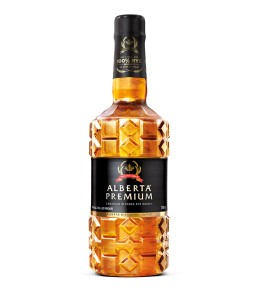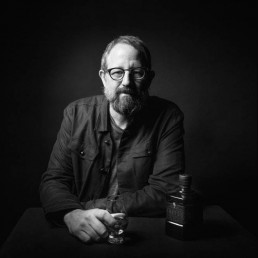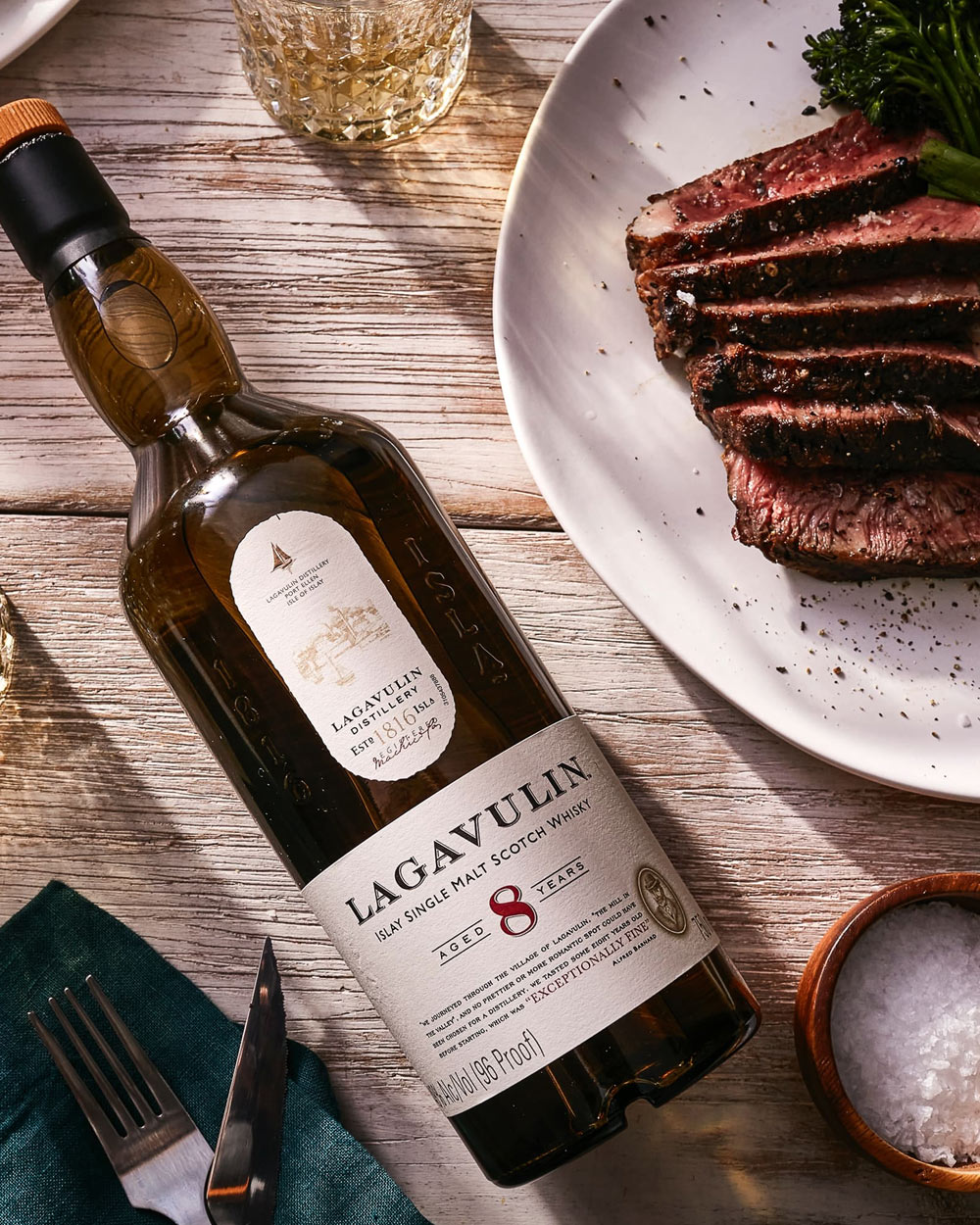When you turn into Alberta Distillers Limited, a massive spirits producer located in the heart of Calgary, it’s clear this place is not built for tourists.
The plant’s exterior is a hive of activity with a parade of trucks and railcars loaded with raw materials rolling in while cases of finished product rollout. Inside, hardhats are required not for show but because there’s a legit chance you’ll whack your head on low-hanging pipes. The sturdy and cost-efficient steel exterior of ADL’s pot and continuous stills starkly contrast the gleaming, customer-facing copper stills along Kentucky’s Bourbon Trail. The hardware has all the copper it needs on the inside where it counts. ADL is a serious production facility that pumps out over 20 million liters of spirit annually for dozens of brands. The folks running things are serious about creating cost-efficient, high-quality spirits.
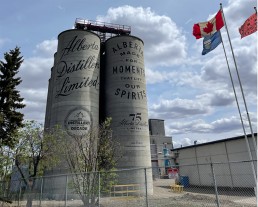
Founded in 1946, Alberta Distillers is the oldest and largest distillery in Western Canada and the third largest in the country. But unlike ubiquitous brands like Crown Royal and Canadian Club, 80 percent of ADL’s stock is sold as bulk spirits for various products. But the company features eight in-house brands, including ADL’s flagship Alberta Premium Canadian whisky. While this easy drinking and affordable 100 percent rye has been a workhorse in Canadian speed racks for 64 years, Alberta Premium has never been available in the States. But after a limited cask strength offering was released in 2020, Alberta Distillers launched Alberta Premium into the USA in March 2022. Last month a handful of American journalists (including myself) visited the facility to discover how ADL crafts their Canadian sippers from grain to glass. It turns out Canada does things a little differently than here in the United States.
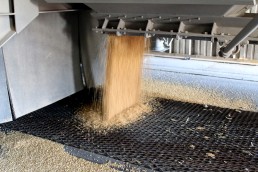
GRAIN ARRIVES: Moving Serious Volume
ADL moves raw material and finished products by land and sea. Shipping between 4-6 rail cars per week plus 50 massive sea containers and an additional 150 trucks annually are utilized to bring in raw materials. For perspective, one silo holds 400 tons, or seven trucks worth of grain, which ADL runs through in about two weeks. They have eight of these silos on site, including locally grown Prairie Rye used in Alberta Premium.
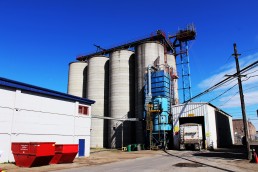
Upon arrival, ADL will test grain samples for moisture content, which should be under 14 percent. Then a dockage test is performed to screen the grain for excessive foreign material. If the load fails a dockage test for foreign materials (this happens maybe twice a month), the grain is sent to a nearby facility to be cleaned before it’s accepted. If everything is in spec, the grain is moved to a silo and awaits the mash cooker.
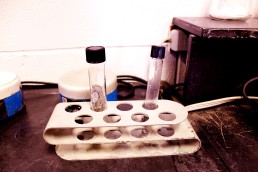
THE SCIENCE OF ENZYMES: The Glue Holding Alberta Premium Together
Alberta Distillers has a couple of secret weapons at their disposal to produce high quantities of quality spirits at low cost, and Microbiologist Shannon Thomas is one of them. Making alcohol requires enzymes to convert starch into sugars for fermentation, and there are a few ways to do this. The classic solution is adding a dose of malted grain, usually barley, to a mash. But another way to achieve this is by adding commercial enzymes to a mash. This is a common practice in bourbon production even if the boys in Kentucky don’t love talking about it.
Conversely, ADL embraces the use of external enzymes for starch-to-sugar conversion. This “house-made” enzyme is crucial to streamlining rye production and contributing signature flavors in the cooking and fermenting process. Instead of purchasing a commercial product, it’s Thomas’ job to create their own.
“Commercial enzymes are a purified version,” Shannon explains. “Since we don’t purify, we get a host of side enzymes which improves the rye fermentation process, increases yield, and contributes to flavor. Commercial enzymes can be inefficient since it’s difficult to control by-products, which reduces yield and raises production costs. This inefficiency shows up in the price of a bottle.”
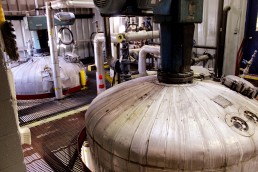
MAKING DISTILLER’S BEER: Cooking and Fermenting Grains
The first time ADL’s rye meets Thomas’ enzymes is in the grain cooker prior to fermentation. Rye and water are loaded in batches cooked at about 176 degrees Fahrenheit. The temperature is reduced to about 90 degrees whn enzymes are added in the final stages of mash cooking, converting starches to sugar. During fermentation, yeast eats these sugars and converts these sugars to alcohol. Fermentation for Alberta Premium is about 72 hours, which is pretty standard in all styles of whisky production.
“One thing that sets us apart from most producers is that all of our grains, including rye, are not malted,” says ADL General Manager George Teichroeb. “Since we don’t utilize malted grains, our cocktail of enzymes allows us to convert starch to sugar in a slightly different process than a natural conversion from malted rye. We find this has a host of benefits, including enhanced flavors, nice viscosity, and a smoother fermentation process.”
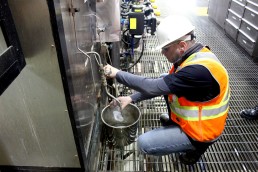
DISTILLATION: The Canadian Whisky Style, Explained
United States rye producers are legally bound to pull distillate off a still under 80 percent alcohol by volume, then its required to water it back to under 125 proof, or 62.5% ABV, before it enters the barrel. Classic Canadian whisky makers take a different approach by distilling at a considerably higher ABV. This creates a clean, borderline neutral spirit that leans heavily on barrel influence for flavor. This is one-way Canadian whiskies achieve the easy-going drinkability for which they’re known.
“Alberta Premium is a blend of both column and pot distilled whiskey,” explains Teichroeb. “Column still distillate comes off at 94% ABV and enters the barrel at 78 percent. Our pot still whisky comes off at about 80% ABV and is knocked back to around 64% before it enters a barrel. The inclusion of pot still whisky, which contributes body and additional flavors for complexity, sets us apart from many major Canadian distillers.”
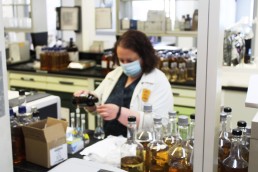
QUALITY CONTROL: Inside The Sensory Lab
Another secret weapon in ADL’s arsenal is Quality Assurance Spirits Manager Maria Palafox, who manages the company’s sensory lab. This is where Palafox and her team analyze quality from grain to bottle. Rye is initially tested to make sure toxic elements called mycotoxins and other fungal metabolites are not present. High wines are also analyzed to confirm the presence of specific flavor-yielding congeners before the distillate enters the barrel.
The final quality check is a good old fashioned taste test. This is where Palafox shines. Maria is a naturally gifted taster with the uncommon ability to detect subtle aromas and flavors that most of us will not notice. Her trained nose and sensitive palate will ferret out off-flavors before it reaches the barrel better than any scientific test ever could.
“Many distillers say it’s OK to have some bad congeners in their distillate,” says Palafox. “The rationale is that these will be filtered out during the aging process. And they might. But we prefer to remove these and not worry about them later. Sometimes we redistill to remove bad congeners, but we prefer doing this to hoping bad congeners age out in the barrel.”
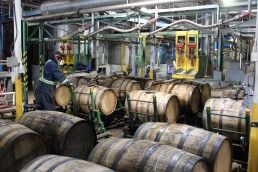
MATURATION AND BLENDING: Where It All Comes Together
The liquid must enter a new, charred oak barrel to make American rye. Canadian distillers have a broader palette of wood styles from which to choose. ADL utilizes virgin oak, ex-bourbon, and multi-use barrels to produce Alberta Premium.
“After an ex-bourbon barrel exceeds two aging cycles, it is considered multi-use, or what we call a Canadian barrel,” Teichroeb explains. “While our column distilled rye is aged in these Canadian casks, our pot still whisky is aged in new oak and first fill ex-bourbon barrels.”
John McCarthy is a spirit, travel, and lifestyle journalist, managing editor, and author of The Modern Gentleman and Whiskey Rebels: The Dreamers, Visionaries & Badasses Who Are Revolutionizing American Whiskey. McCarthy is also editor of Barleycorn Drinks and Director of Judging of the John Barleycorn Awards.
